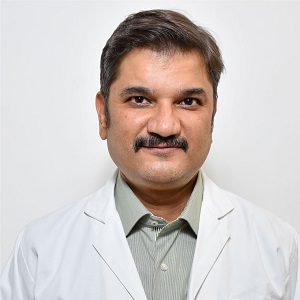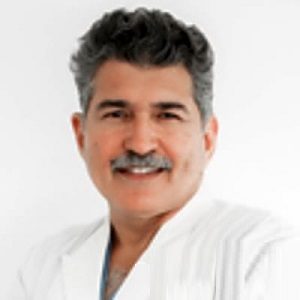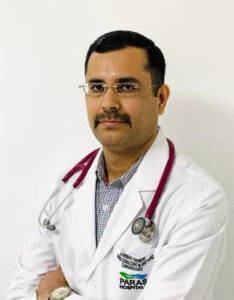Best ICD/AICD Implantation Doctors in India
- Interventional Cardiologist, Gurugram, India
- Over 10 years’ experience
Profile Highlights:
- Dr. Jagdeep Yadav is one of the best cardiac surgeons in Gurugram. He is particularly interested in non-coronary therapies such as peripheral interventions and device closures.
- Dr. Jagdeep Yadav is skilled in using modern techniques in interventional cardiology and non-invasive cardiology procedures. He employs cutting-edge technologies such as IVUS, OCT, FFR, and IVL to make life better in complex cardiac therapies.
- Cardiologist, Gurugram, India
- Over 15 years’ experience
Profile Highlights:
- Dr. Sanjat Chiwane is an MCI Certified young cardiologist in Gurugram.
- His career success measured 1200+ coronary angioplasties, 100 Balloon mitral valvuloplasties, and 100 renal angioplasties.
- Continuing with his meticulous career, the doctor also worked as a Clinical Instructor in Medicine and Cardiology at Mumbai University. He added Organ Transplantation to his expertise.
- Cardiologist, Gurugram, India
- Over 16 years’ experience
Profile Highlights:
- Dr. Kuldeep Arora is a promising cardiologist in Gurugram. He is a specialist in radial angiography and angioplasty.
- Dr. Kuldeep Arora has expertise in Interventional Cardiology and performed around 12,000 therapeutic cardiac interventions.
- He also assisted with the device closure of atrial septal abnormalities, Pacemaker implantations, ICD, and CRT, besides management of heart attacks.
- Cardiovascular Surgeon, Cardiac Surgeon, Gurugram, India
- Over 32 years’ experience
Profile Highlights:
- Dr. Vijay Kohli is one of the best cardiac surgeons in India. He has brought an evolution in the spectra of Cardiac Surgery, wherein, he was the first leading surgeon to perform CABG on a beating heart in Kathmandu, Nepal.
- Vijay Kohli performed the first coronary artery bypass surgery in Jammu Medical College in 2001.
- Additional Director Cardiology
- 15 Years Experience
Profile Highlights:
Profile Snapshot of Dr. Hemant Gandhi
- Hemant Gandhi is a distinguished figure in the field of interventional cardiology with over 15+ years of extensive experience.
- He is recognized for his proficiency in handling cases involving congenital heart defects such as ASD and PDA, along with peripheral angiography, angioplasty, and balloon valvuloplasty.
- Gandhi holds the distinction of being the first D.M. (Cardiology) candidate to graduate from the prestigious PGIMER and Dr. RML Hospital, New Delhi.
- Beyond his clinical practice, he is actively engaged in the education and training of medical students in the specialized domain of Cardiology.
- His contributions to academia are further underscored by a significant number of publications that enrich the field with his insights and research findings.
Best ICD / AICD Implantation Hospitals in India
AICD Implantation
Automated Implantable Cardioverter-Defibrillator (AICD) or an implantable cardioverter-defibrillator (ICD) is a device that is placed in the chest & monitors the heart rate & rhythm. In case, a fast abnormal heart rhythm is detected, the device provides energy to the heart muscle which normalize the heart rhythm.
The ICD comprises of two parts:
First part is the Lead(s) which are made up of wires and sensors that monitors the heart rhythm and delivers energy used for pacing.
The second part is the Pulse Generator which has a battery that houses energy, & a tiny computer that receives information from the leads to determine how the heart is beating.
Types of ICDs
Single-chamber ICD
A lead is attached in the right ventricle that provides energy to the ventricle to restore a normal heart rhythm.
Dual-chamber ICD.
Leads are attached in the right atrium and the right ventricle which provides energy to the right atrium and then to the right ventricle that helps the heart to pace in a normal sequence.
Biventricular ICD
Leads are attached in the right atrium, the right ventricle and the coronary sinus that lies adjacent to the left ventricle and helps the heart beat in a more efficient way. It is specifically used for patients suffering with heart failure.
Functions of ICD
- When the heart beat is too fast, a chain of small electrical impulses are delivered to the heart muscle which restores heart rate and rhythm. This is known as Antitachycardia Pacing (ATP)
- A low-energy shock is delivered which restores heart rhythm. This is known as Cardioversion.
- When the heart is beating too fast, a high-energy shock is delivered to the heart muscle which restores heart rhythm. This is known as Defibrillation.
- When the heart beat is too slow, a small electrical impulses is delivered to the heart which stimulates the heart muscle to maintain a suitable heart rate. This is known as Bradycardia pacing.
Conditions in which ICD is implanted
- Episode of sudden cardiac arrest (ventricular fibrillation).
- People who are at high risk for sudden cardiac arrest.
- Hypertrophic cardiomyopathy.
- Dilated cardiomyopathy.
- Ventricular tachycardia.
ICD Implant Procedure
The ICD may be implanted in two ways:
1. Endocardial (transvenous) Approach
The first way is the endocardial (transvenous) approach. It the most approach in which ICD is implanted. In this approach, a small incision is made under the collar bone. The lead is inserted into the heart, through a vein. The generator is placed in the upper chest, under the skin & attached to the lead(s).
2. Epicardial Approach
The second way is epicardial approach. This requires open-heart surgery. The lead is sewn onto the heart instead of placing the lead through a vein.
The morning after the implant, the patient will undergo a chest X-ray to make sure the ICD leads are in the proper position and the ICD will be programmed to ensure it is functioning properly.
Precautions after ICD Implantation
Short-term precautions
- Avoid vigorous exercises, including golf, tennis, swimming, bicycling, bowling or vacuuming
- Don’t lift anything weighing more than 5 pounds
- Avoid strenuous exercise programs
Long-term precautions
- It is safe to talk on a cellphone, but avoid placing the cellphone within 6 inches of the ICD implantation site when the phone is turned on.
- After surgery, the patient will receive a card that stating he/she have an ICD. Show this card to airport personnel because the ICD may set off airport security alarms.
- Avoid scanning with a hand-held detector to less than 30 seconds over the site of the ICD or make a request for a manual search.
- Some procedures, such as magnetic resonance imaging (MRI), magnetic resonance angiography (MRA), and radiofrequency or microwave ablation are not recommended after ICD implant.
- Stand at least 2 feet (0.6 meters) from welding equipment, high-voltage transformers or motor-generator systems.
- Keep magnets at least 6 inches (15 centimeters) from the ICD site.






